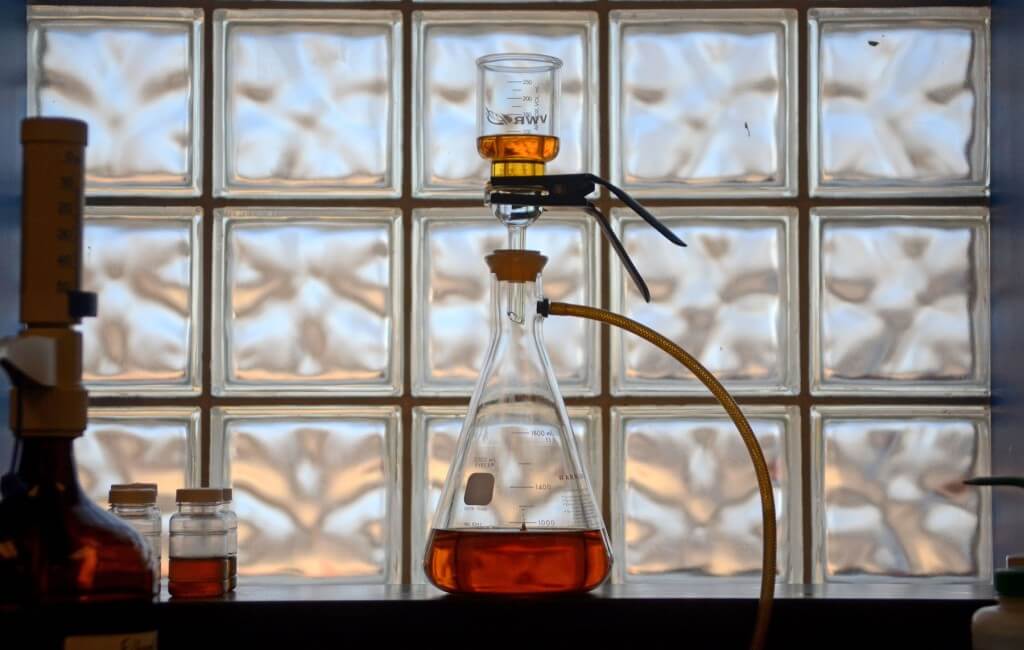Membrane Patch Colorimetry
The Membrane Patch Colorimetry test is used to measure the color bodies of insoluble contaminants in lubricants. It uses solvent extraction to capture varnish and oxide insoluble contents from a fluid sample on a micron filter-membrane. The color spectra of the insolubles collected can be correlated to the amount of oxidation byproducts in the oil. The insolubles are analyzed with a spectrophotometer and with the total amount of color.
Operating Principle
Once the sample is received by the lab, it is held for a specified time at a controlled temperature. Once the required time is reached a portion of the oil is mixed with a non-polar solvent and is passed through a .45 micron Millipore patch. Varnish material tends to be polar in nature, and not very soluble in the oil/solvent mixture. The insoluble material will be captured on the Millipore patch. Varnish tends to color the patch and by measuring the hue and intensity of the colored material deposited on the patch a general characterization can be made about the level of varnish in the system.
Significance
By monitoring the level of insolubles present in the lube oil, informed decisions can be made regarding the implementation of varnish mitigation technology and costly downtime avoided. Continued testing once varnish mitigation has been implemented can be used to help evaluate the effectiveness of the technology in use.
Applications
Steam turbines, gas turbines, hydraulic systems, compressors, bearing lube systems.


